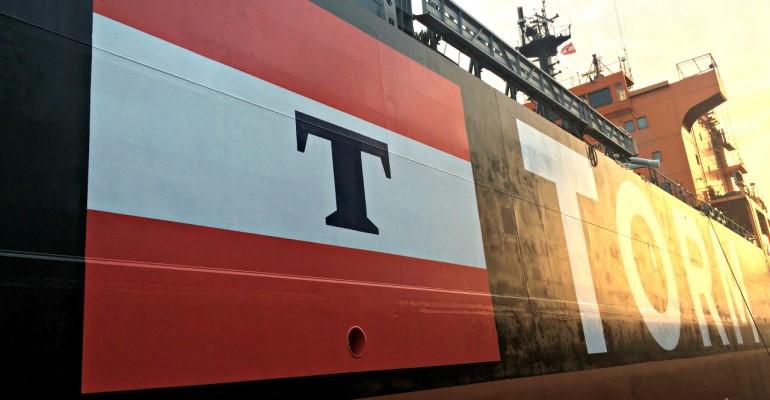Torm operates its 90 product tankers on the spot market, meaning that its vessels could potentially be sent to any port by a charterer.
This puts Torm in a similar position to many Greek owners, mainly bulk carrier operators, who have also highlighted the potential difficulties posed if an owner chose the wrong fuel of the future when building new vessels; namely not knowing whether that fuel will be available globally.
A solution, according to Torm’s head of decarbonisation, Lars Mathiason, is a system they call the Here and Now Decarbonisation, dealing with emissions that can be reduced to meet IMO targets immediately.
This requires vessel monitoring from onshore experts who will advise crew of adjustments that can be made to every energy consuming part of the vessel’s machinery to optimise its performance in real time.
“At the end of 2023 we were surprised to find we had achieved a 39.6% reduction in greenhouse gas emissions from the fleet,” claimed Mathiason.
Every element of a vessel’s operations comes under scrutiny, from a hull and propulsion perspective, including coatings with out of cycle drydocking for new paint as well as crew training for weather routing and energy saving devices for selected ships, such as Mewis Ducts.
Some 80 of the company’s ships will be connected to the system by the end of this year. And “Torm has a technical decarbonisation team of more than 20 people monitoring the vessels,” said Mathiason, who added that “All the equipment on ships is over-sized for the job it is required to do.”
Equipment is designed to handle the most extreme moments that occur occasionally but can be used at more effectively in most situations. This also requires training for crew on how to use the technology more efficiently, for example by not using air conditioning at full power when it is unnecessary.
In addition to the machinery monitoring Torm has developed an AI assisted weather routing tool that sends crew updates on multiple occasions per day, this element alone has seen efficiencies of 11%, said Mathiason.
The company had aimed to meet the IMO 2030 targets for carbon intensity by 2025, but Mathiason claims the company were already 0.4% off this level at the end of last year, two years ahead of its own target and seven years before the IMO target.
Frederik Pind, the MD of Copenhagen-based consultancy Njord believes that this type of monitoring with technology that can accurately monitor vessel performance could “change the conversations between owners and charterers, with the two sides likely to be more willing to share the cost and benefits of efficiency upgrades”.
“It will change the dynamics between owners and charterers and unblock the decision-making processes, if charterers can see what they are actually paying for,” explained Pind.
Meanwhile, another industry figure cast some doubt on Torm’s figures, without referring to Torm directly, the source suggested that their company had attempted a similar, if less extensive, energy saving system, but was only able to save between five and 10%. Although the source did acknowledge there were differences, including the fact that their company had not included weather routing in their system.
Copyright © 2024. All rights reserved. Seatrade, a trading name of Informa Markets (UK) Limited.
Add Seatrade Maritime News to your Google News feed.  |

